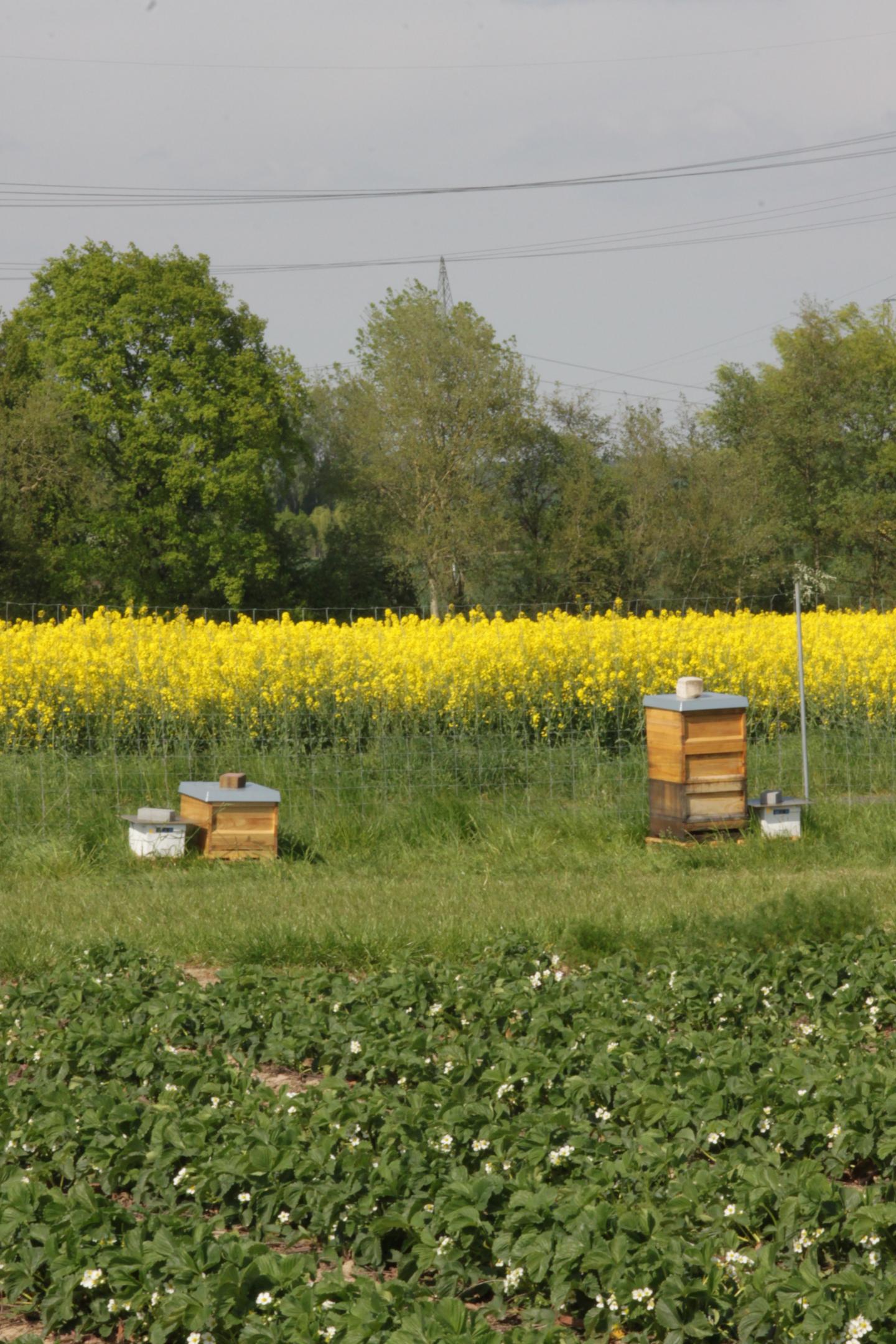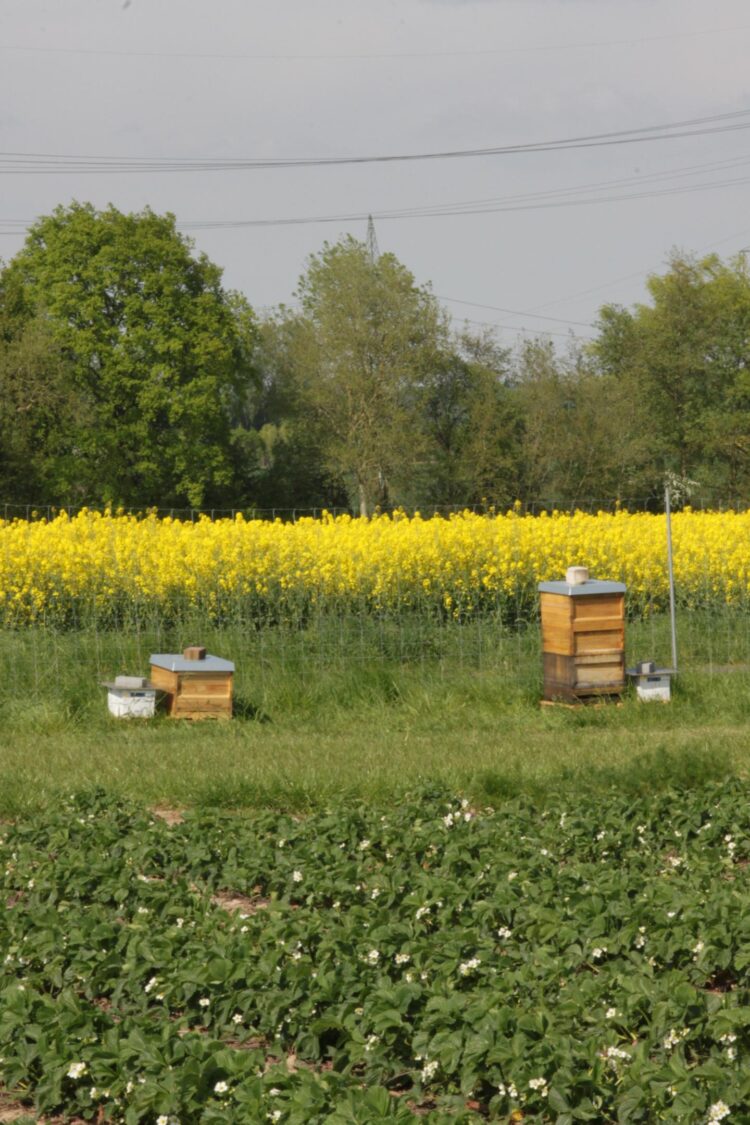Research team led by Göttingen University analyses the foraging behavior of bees using pollen DNA

Credit: Svenja Bänsch, University of Göttingen
The yield and quality of many crops benefit from pollination, but it isn’t just honey bees that do this work: bumble bees also have a role. However, placing honey bee or bumble bee colonies next to the field does not guarantee that they will visit the desired plants since there may be other plant species flowering at the same time that prove more attractive. A team from the University of Göttingen, together with researchers from the University of Applied Sciences Mittweida and the Julius Kühn Institute, used innovative molecular biological methods and traditional microscopy to investigate the pollen collecting behaviour of honey bees and bumble bees in agricultural landscapes. They show that bumble bees take much more pollen from dif-ferent plant species than honey bees to satisfy their need for protein. Furthermore, less pollen from the target – in this case strawberry plants – is collected when there are fields of flowering oilseed rape in the surrounding landscape. The results have been published in the journal Molecular Ecology.
The researchers placed honey bee and bumble bee colonies next to strawberry fields in the Göttingen and Kassel region and collected pollen from returning honey bees and bumble bees. The bees collect the pro-tein-rich pollen mainly for feeding their offspring. The pollen DNA was investigated working closely with the Division of Molecular Biology of Livestock and molecular Diagnostics at the University of Göttingen, and the Department of Biochemistry/Molecular Biology of the Mittweida University of Applied Sciences. “DNA analysis tells us which plant species the bees have visited and how diverse their foraging behaviour is. To do this, we sequenced the DNA of the pollen and compared the sequences using a database of regional plant species,” says Dr Svenja Bänsch, post-doctoral researcher in Functional Agrobiodiversity at the Uni-versity of Göttingen.
“Our study shows that honey bees and bumble bees use very different plants to source their pollen in the landscape. In particular, the wide range of bumble bee nutrition, which they find mainly in flower-rich habi-tats, should be taken into account when taking steps to improve nature conservation. Both honey bees and bumble bees, whose colonies can be purchased or rented, are suitable pollinators in strawberry cultivation. However, naturally occurring wild bees should be encouraged as a priority,” concludes Professor Catrin Westphal, Head of Functional Agrobiodiversity at the University of Göttingen.
###
Original publication: Bänsch S., Tscharntke T., Wünschiers R., Netter L., Brenig B., Gabriel, D. & West-phal, C. (2020) Using ITS2 metabarcoding and microscopy to analyse shifts in pollen diets of honey bees and bumble bees along a mass-flowering crop gradient. Molecular Ecology. Doi:10.1111/mec.15675 or: https:/
Contact:
Dr Svenja Bänsch
University of Göttingen
Functional Agrobiodiversity
Grisebachstraße 6, 37077 Göttingen, Germany
Email: [email protected]
Professor Catrin Westphal
University of Göttingen
Functional Agrobiodiversity
Grisebachstr. 6, 37077 Göttingen, Germany
Tel: 0551 39 22257
Email: [email protected]
http://www.
Media Contact
Melissa Sollich
[email protected]
Original Source
https:/
Related Journal Article
http://dx.





